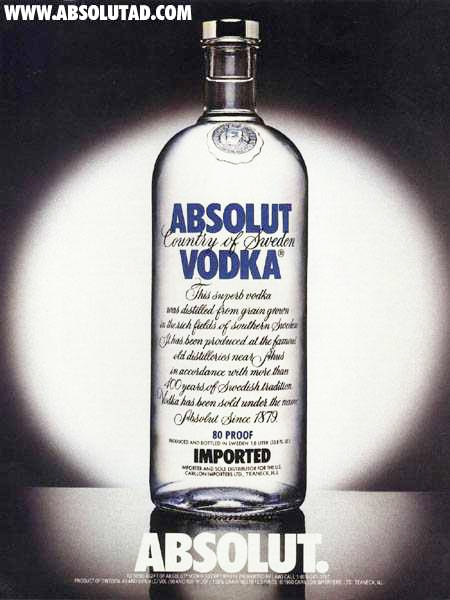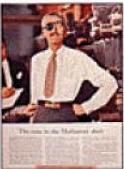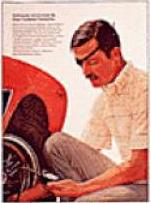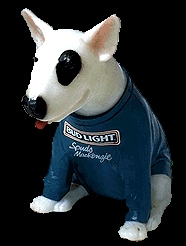This page is inspired by a book by Jack Trout (Positioning: the battle for your mind) and James B. Twitchell (Twenty ads that shook the world). Also see Emotional Branding; Some Excerpts:

The case of Absolut Vodka
The case of Absolut is about
every product or website's potential to become a successful brand. Let us
illustrate our point.
Jack Trout: "In the late 1970's, no one would have expected that a Swedish Vodka import
called Absolut would become one of the hottest-selling Vodka. Absolut success
followed a well-integrated identity campaign, termed "smart, showy, sassy,
sophisticated, and stylish". The shape of the bottle as an aesthetic
concept sold the idea."
We need not say more about the bottle, but a field
of flowers has been planted in Chili in the shape of an Absolut bottle. This
outdoor display is called "Absolut Summer".
Swatch Watch and GAP
clothing followed a similar concept.
Here is a branding formula for Absolut Vodka:
Smart + Showy + Sassy + Sophisticated + Stylish + Aesthetic Bottle + Targeted
at a very fast growing market = Absolut's Hidden Brand Identity
If your website is kind of lazy, don't despair. The next examples should
inspire anyone who strives for gold. Give us a chance and please read the
entire page. 
Hathaway Shirt:
Even though old and kind of unknown, our next example is truly an inspiration
for every website. It has certainly been the inspiration behind many of our
past and present accomplishments. David Ogilvy, father of Branding, gets the
credit for our next example.
Jame B: "What can you say about a white dress shirt just like any other white dress
shirt? How could you sell a white shirt in 1951 before patterns, colors, collars,
elongated sleeves, and puffiness like two-tones became de rigueur? "
Do you see the similarity with our Vodka example? 
Hathaway and David Ogilvy did it. David Ogilvy branded the man under the
shirt and not the shirt. First they tried the idea with Baron George Wrangell.
Later they found their answer in a man wearing an eye patch.
The idea for the man behind the brand was Ogilvy's, however, Edith Jette,
wife of the president of Hathaway discovered the man with the eye patch. It
was a sign of distinction and of course separation.
Here is the branding formula for Hathaway shirt:
Distinction + Separation + Make you look younger + More comfort by more generous
tailoring of collars + Longer tails that stays in your trousers + Mother-of-pearl
buttons + Stitching as an ante-bellum elegance = 1951
Hidden Brand Identity for Hathaway Shirt
Ogilvy tells how the campaign evolved, for a product with an initial advertisin! budget of only $30,000.
I concocted eighteen different ways to inject this magic ingredient of "story appeal." The eighteenth was the eye patch. At first we rejected it in favor of a more obvious idea, but on the way to the studio I ducked into a drugstore and bought an eye patch for $1.50.
 |
Spuds MacKenzie for Bud Light Beer |
Exactly why it turned out to be so successful, I shall never know.
It put Hathaway on the map after 116 years of relative obscurity. Seldom, if ever, has a national brand been created so fast, or at such low cost. ...
As the campaign developed, I showed the model in a series of situations in which I would have liked to find myself: conducting the New York Philharmonic at Carnegie Hall, playing the oboe, copying a Goya at the Metropolitan Museum, driving a tractor, fencing, sailing, buying a Renoir, and so forth.
The following are Mr. Ogilvy's commandments for creating advertising campaigns:
- What you say is more important than how you say it. Two hundred years ago Dr. Johnson said, "Promise, large promise is the soul of, advertisement. " When he auctioned off the contents of the Anchor Brewery he made the following promise: "We are not here to sell boilers and vats, but the potentiality of growing rich beyond the dreams of avarice."
- Unless your campaign is built around a great idea, it will flop.
- Give the facts. The consumer isn't a moron; she is your wife. You insult her intelligence if you assume that a mere slogan and a few vapid adjectives will persuade her to buy anything. She wants all the information you can give her.
- You cannot bore people into buying. We make advertisements that people want to read. You can't save souls in an empty church.
- Be well-mannered, but don't clown.
- Make your advertising contemporary.
- Committees can criticize advertisements, but they cannot write them.
- If you are lucky enough to write a good advertisement, repeat it until it stops pulling. Sterling Getchel's famous advertisement for Plymouth ("Look at All Three") appeared only once, and was succeeded by a series of inferior variations which were quickly forgotten. But the Sherwin Cody School of English ran the same advertisement ("Do You Make These Mistakes in English?") for forty-two years, changing only the type face and the color of Mr. Cody's beard.
- Never write an advertisement which you wouldn't want your own family to read. Good products can be sold by honest advertising. If you don't think the product is good, you have no business to be advertising it. If you tell lies, or weasel, you do your client a disservice, you increase your load of guilt, and you fan the flames of public resentment against the whole business of advertising.
- The image and the brand. It is the total personality of a brand rather than any trivial produc difference which decides its ultimate position in the market.
- Don't be a copy cat. Nobody has ever built a brand by imitating somebody else's advertising. Imitation may be the' 'sincerest form of plagiarism," but it is also the mark of an inferior person.
|